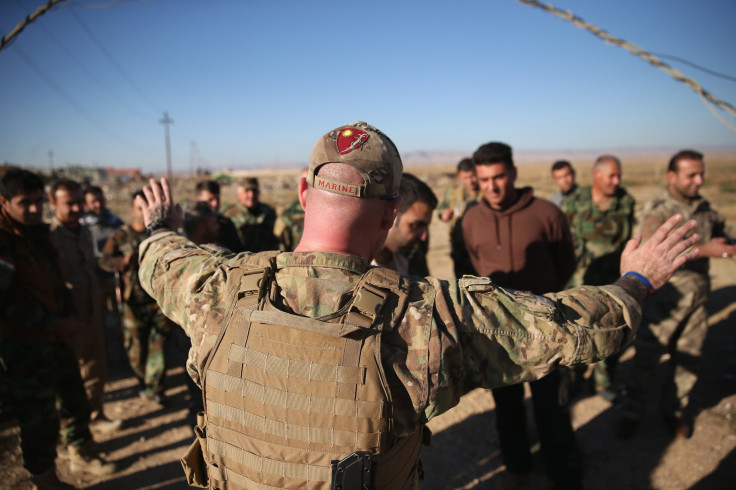Is The US At War? List Of Countries Where There Are American Military Troops Include Iraq, Syria, Afghanistan, Others

With so much discussion over foreign policy and immigration concerns from Muslim-majority nations after the inauguration of Donald Trump, there might be some confusion about how the U.S. is fighting terrorism in the Middle East. The U.S. may not be in a direct war with anyone other than the Islamic State, also known as ISIS, but there is still a military presence in multiple countries carried over from previous administrations.
The number of combat troops has dipped due to drone warfare, but President Trump, who campaigned on being tougher on ISIS, has said he would be willing to send up to 30,000 troops to Iraq and Syria. However, he inherited a military presence in not just those two countries, but other hotspots, as well.
Afghanistan
Just days after the Sept. 11 attacks, Congress and President George W. Bush authorized the use of military force to overthrow the Taliban.
In President Barack Obama's first few years in office, the number of troops surged from 30,000 to more than 100,000 troops. Though Obama scaled back the troop level in recent years, he still kept 8,400 to train and assist local forces against the Taliban.
Iraq
The number of forces peaked at 170,300 in November 2007 but was followed by a full withdrawal in December 2011. However, Obama would send troops back to Iraq to fight against ISIS in June 2014, and in September 2016 he authorized the deployment of 600 more troops to raise the total to about 5,100.
Russia
There are 3,500 troops and 87 tanks in Poland as part of the Obama administration's effort to deter escalating tension between Russia and Eastern Europe. The decision was purportedly intended to calm Poland's fears after Russia annexed Crimea from Ukraine in 2014.
The military presence is welcomed in Poland, a new member of NATO. “This is an important day for Poland, for Europe, for our common defense,” Prime Minister Beata Szydlo told U.S. soldiers in January.
But a spokesman for the Kremlin has called it a "threat" that endangers Russia's "interests and our security."
Syria
In April, Obama announced the number of special operation forces would increase to 300 to support local militias in Syria. In December, 200 more military personnel were sent to raise the total to 500 in an effort to help battle ISIS in the city of Raqqa, located about 100 miles east of Aleppo.
On Jan. 8, there was a 90-minute U.S. raid that reportedly killed dozens of ISIS fighters in the eastern Syrian province of Deir Az Zor.
Yemen
The Pentagon in May announced that there was a "small number" of U.S. advisors on the ground in Yemen supporting local forces. The U.S. has mostly used drone strikes in Yemen, where al-Qaeda has gained strength during the country's civil war. On Dec. 22, the Pentagon announced that drones killed 28 suspected al-Qaeda militants from Sept. 23 to Dec. 13.
Last week, in the first military operation overseen by Trump, a U.S. commando raid in the province of Bayda resulted in the death of a Navy SEAL, three wounded U.S. troops and the deaths of 30 Yemeni civilians.
© Copyright IBTimes 2024. All rights reserved.





















